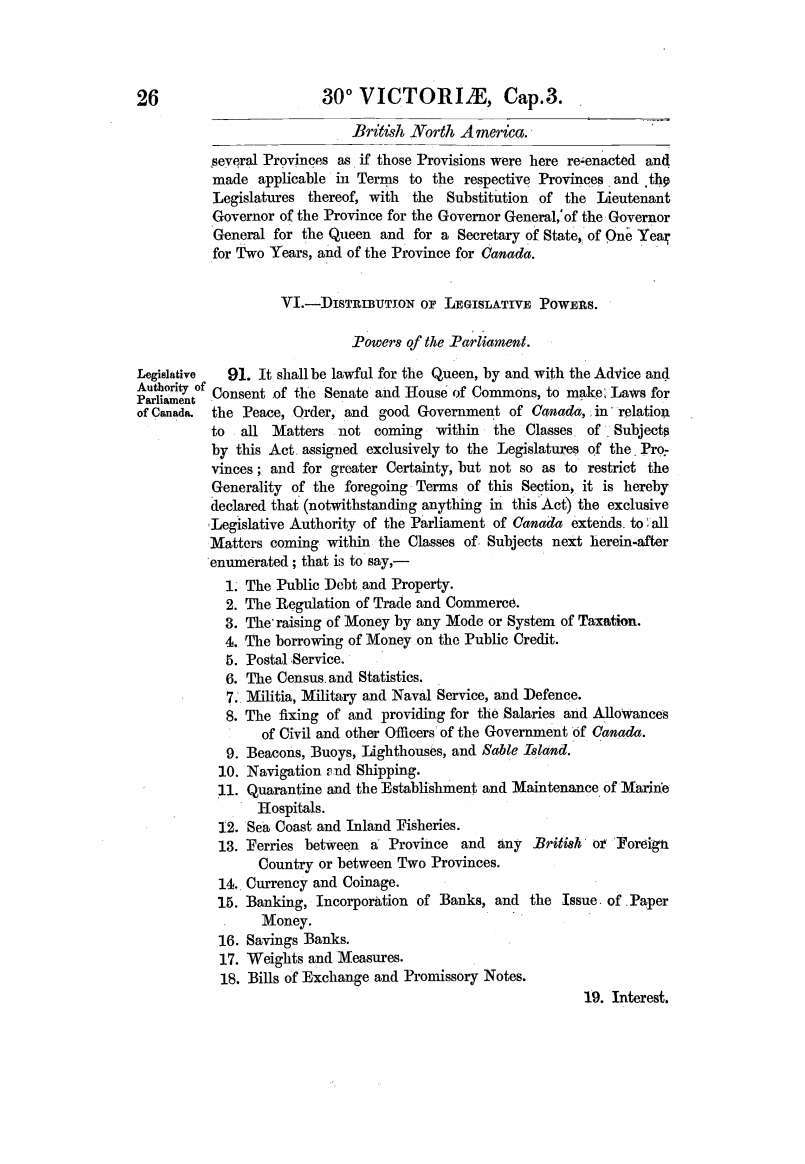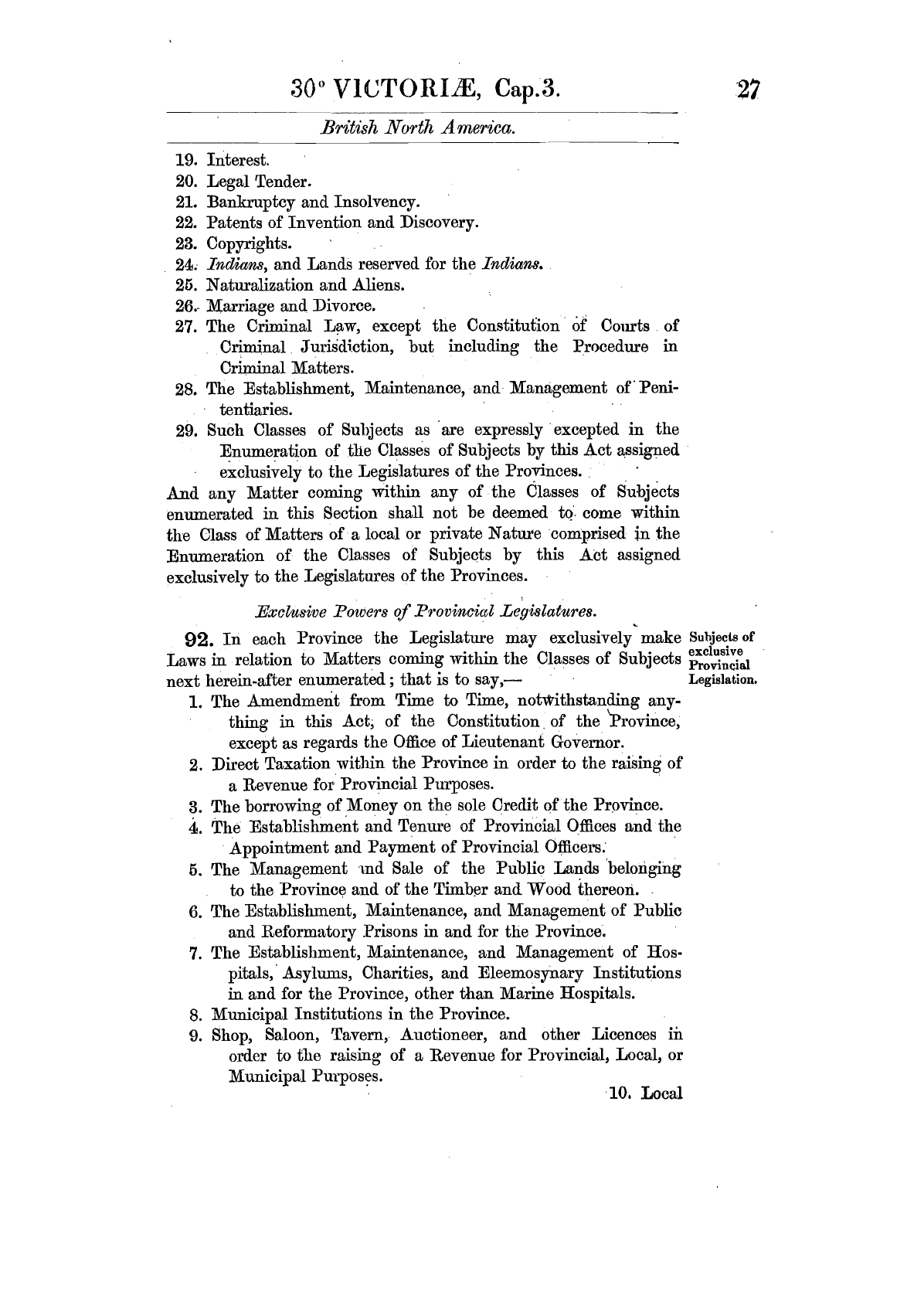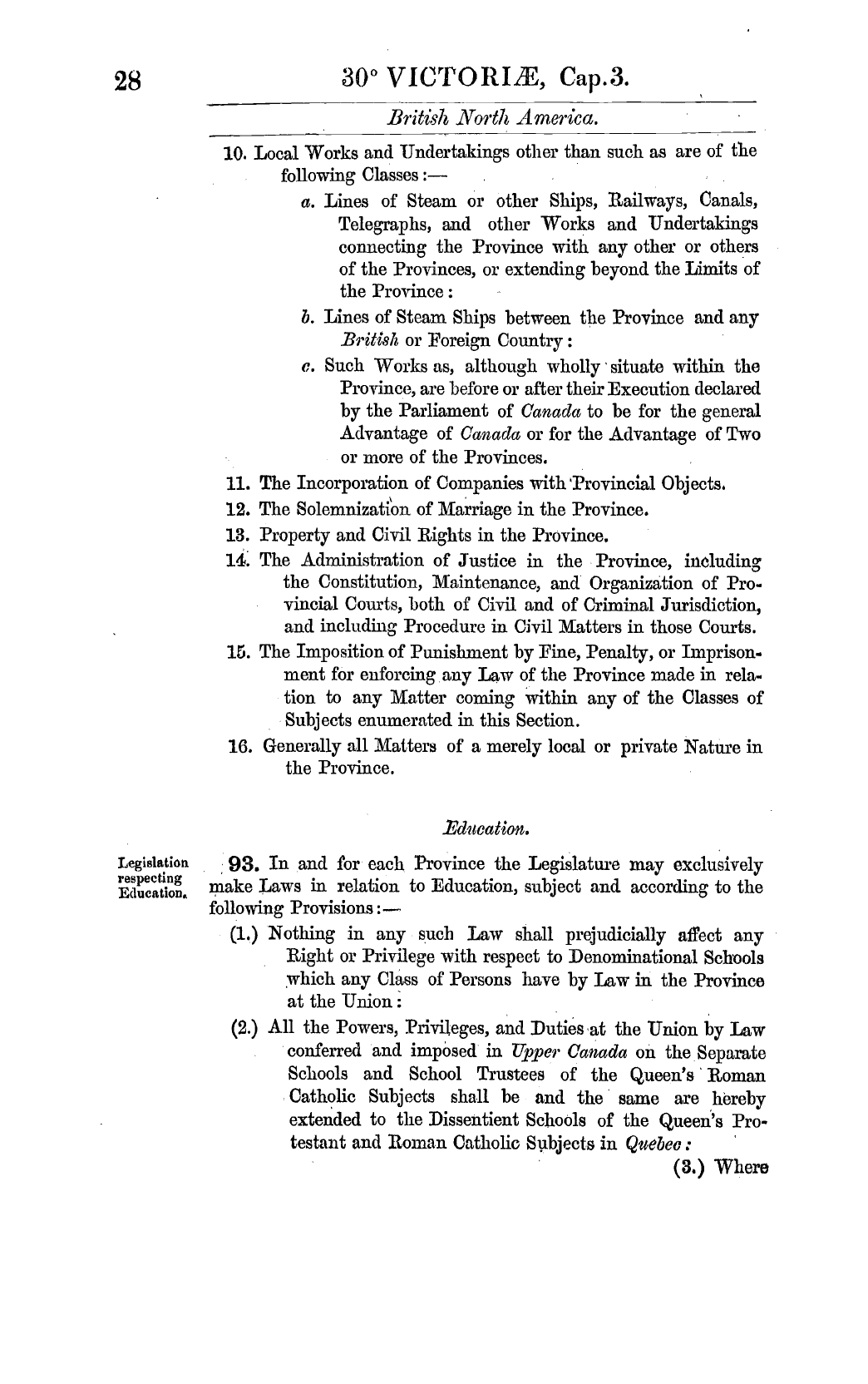The Constitution Act, 1867, outlines the division of responsibilities between the federal Parliament and the provincial legislatures. In general, the federal Parliament has responsibility for policies and activities that affect the whole of Canada, such as banking, criminal law, national defence, and citizenship. Provincial legislatures are responsible for such activities as education, health care, social welfare, and highways, as they pass laws that affect only the people of their province.
There is some overlap between these two levels of government, known as areas of concurrent jurisdiction. In certain areas, such as taxation, agriculture, old age pensions, and natural resource extraction, both levels of government can pass laws, though if there is a conflict, the dispute may be settled through the justice system.
Federal and provincial responsibilities have shifted as a result of a century and a half of natural evolution. For example, back in 1867, the drafters of the British North America Act, 1867, could not have anticipated the need for regulation over areas such as air transportation, water pollution, or the internet. It's been left to judicial interpretation, in that the courts decide on what areas should be controlled by the federal Parliament and what the areas provinces should control. Judicial interpretation and, to a lesser degree, constitutional amendments have influenced the role of federalism and the federal control of programs such as employment insurance and pensions.



